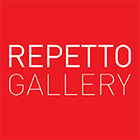



Mario Schifano was born on September 20, 1934, in Homs, Syria, where his father was working as an archaeologist at the excavations of Leptis Magna. After moving to Italy, Schifano began working at the Etruscan Museum of Villa Giulia in Rome, where he completed an apprenticeship that profoundly influenced his artistic development.
His debut took place in 1960 with an exhibition at the Galleria La Salita in Rome, titled “Five Roman Painters: Angeli, Festa, Lo Savio, Schifano, Uncini”, curated by Pierre Restany. From the outset, Schifano attracted critical attention with his monochrome paintings. He later began incorporating numbers, letters, road signs, and logos of famous brands such as Esso and Coca-Cola into his works, marking the beginning of a unique style that earned him an exclusive contract with American gallerist Ileana Sonnabend.
In the 1960s, Mario Schifano held numerous solo exhibitions in Rome, Paris, and Milan, receiving significant recognition. Among these were the Lissone Prize in 1961 and the Fiorino Prize in Florence in 1963. In 1962, he participated in the exhibition “The New Realists” at the Sidney Janis Gallery in New York, which marked the artist’s debut on the international scene.
During this period, Schifano began to explore Italian art from the past and Futurism—both clear influences in his later works. In 1964, he presented his first “Anemic Landscapes” at the Venice Biennale. At the same time, he began experimenting with film, producing black-and-white experimental short films on 16 mm film.
Throughout the 1960s and 1970s, Schifano took part in numerous international exhibitions and began collaborating with the psychedelic rock group Le stelle di Mario Schifano, helping to create one of the first live multimedia performances in Italy. Between 1966 and 1967, Schifano developed the series “Oxygen Oxygen”, “Allstars”, “Oases”, and “Comrades, Comrades”, works that reflect his growing interest in contemporary history and his civic engagement.
In 1967, he premiered his first feature film, “Anna Carini Seen in August by the Butterflies”, at Studio Marconi in Milan. This period also marked a phase of ideological and identity crisis for Schifano, leading him to temporarily declare his intention to abandon painting. However, his love for art prevailed, pushing him to continue and to experiment with new techniques and styles.
In the following years, Schifano continued to exhibit in both solo and group shows, in Italy and abroad, and his works stood out for their use of innovative technologies and new materials. Among these was the technique of photographic emulsion, which allowed him to transfer television images onto canvas.
Mario Schifano died at the age of 63, on January 26, 1998, in his studio in Trastevere, Rome.